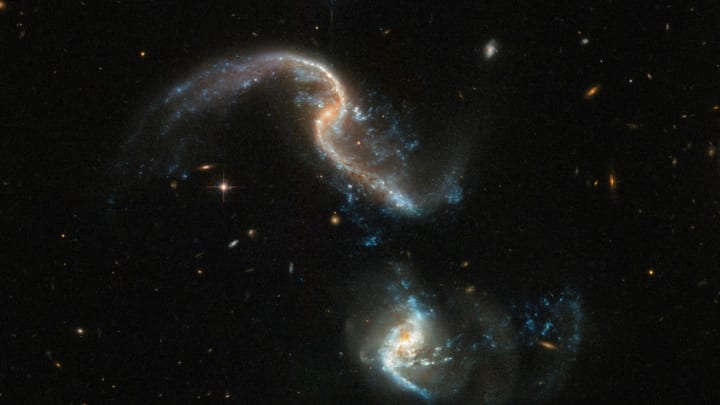Since launching in 1990, the Hubble Space Telescope has captured some magnificent images of our corner of the universe, from neighboring planets to distant nebulae. An updated picture released by the European Space Agency shows two galaxies colliding 350 million light-years away, a process the ESA has been tracking for 52 years, Gizmodo reports.
Galaxies are constantly changing shape and creeping through space. When two of these massive networks cross paths, their stellar material begins to intermingle, and they eventually merge into one entity under the force of gravity. In this image depicting two barred spiral galaxies in the Cetus constellation, the two nuclei are still separate, but the explosive merging process has already been set in motion. Long tidal tails—streams of gas, dust, and stars—feather out from the top of the cluster. The bright blue patches indicate "stellar nurseries" where gas and dust stirred together by gravity are producing new stars.
The photograph was first released in 2008, but this latest version has been updated using Hubble's Advanced Camera for Surveys (ACS) and the Wide Field Camera 3 (WFC3). According to an ESA statement, the galaxies "are like a natural experiment played out on a cosmic scale, and by cataloguing them, astronomers can better understand the physical processes that warp spiral and elliptical galaxies into new shapes."
Galactic mergers are a vital part of the evolution of the universe: Even the Milky Way is on course to crash into a neighboring galaxy 4 billion years down the road. But the process, though violent, is slow-moving. It will be millions of years before these two galaxies in Cetus settle down into one.
[h/t Gizmodo]
